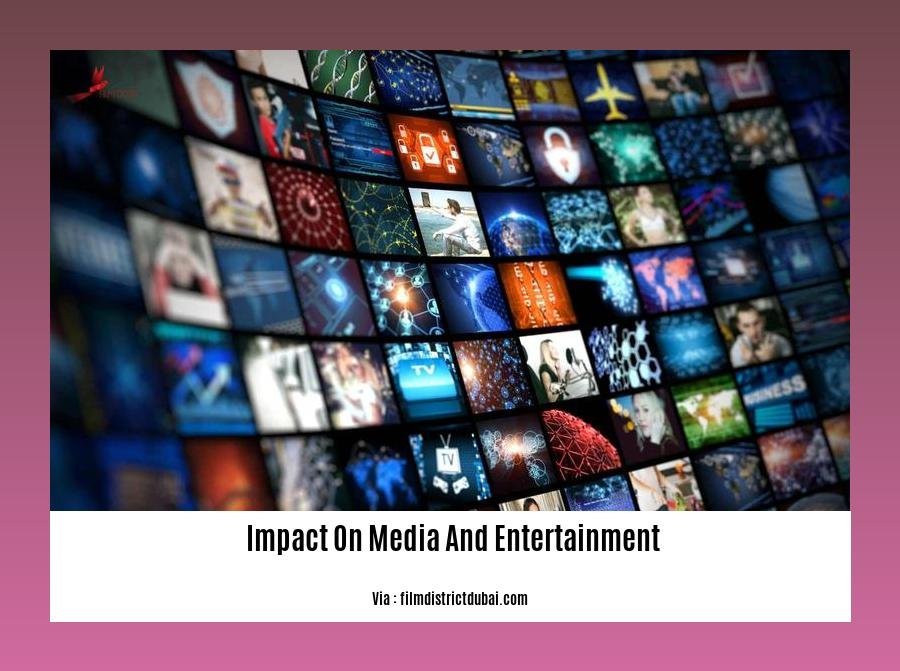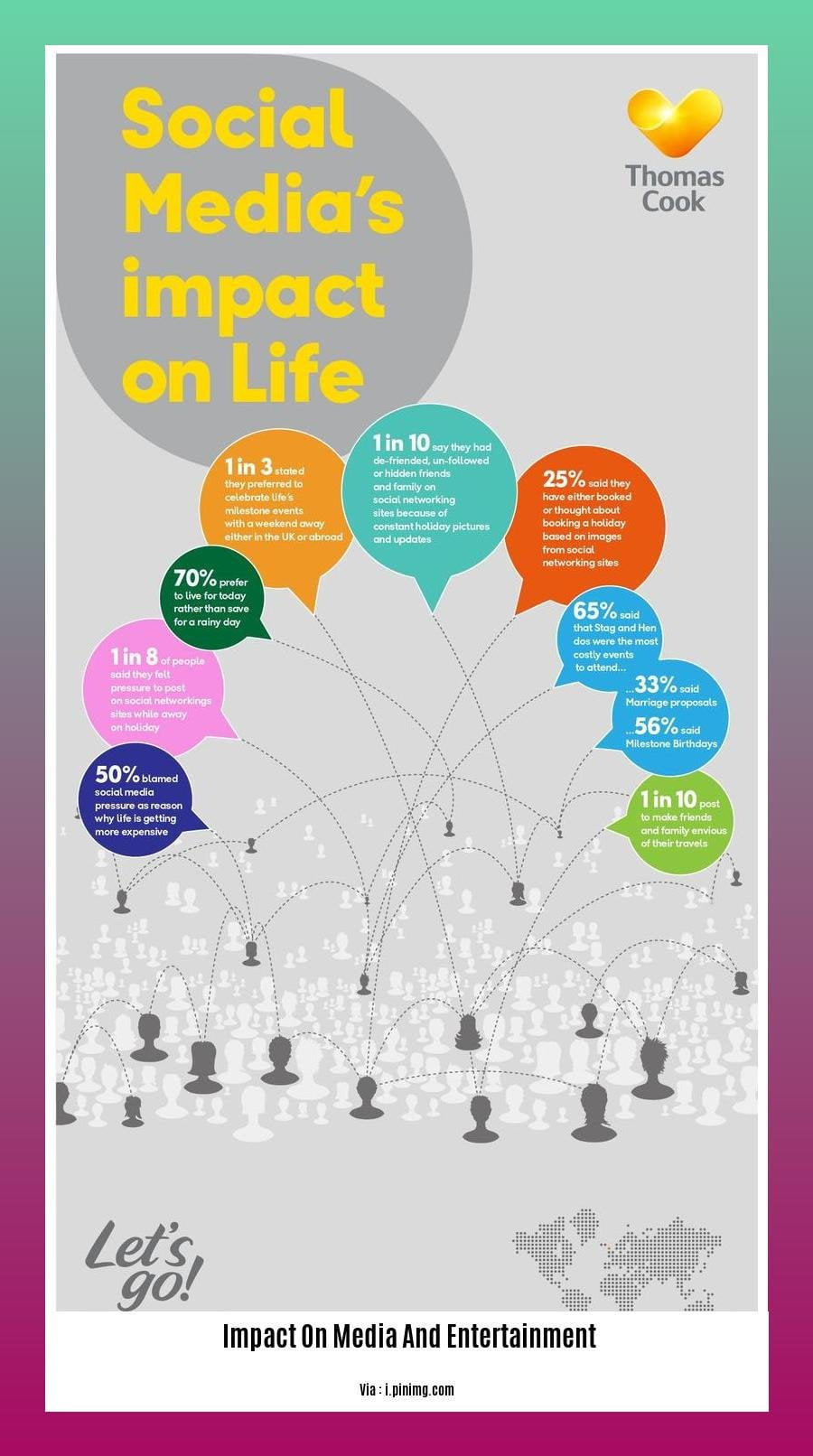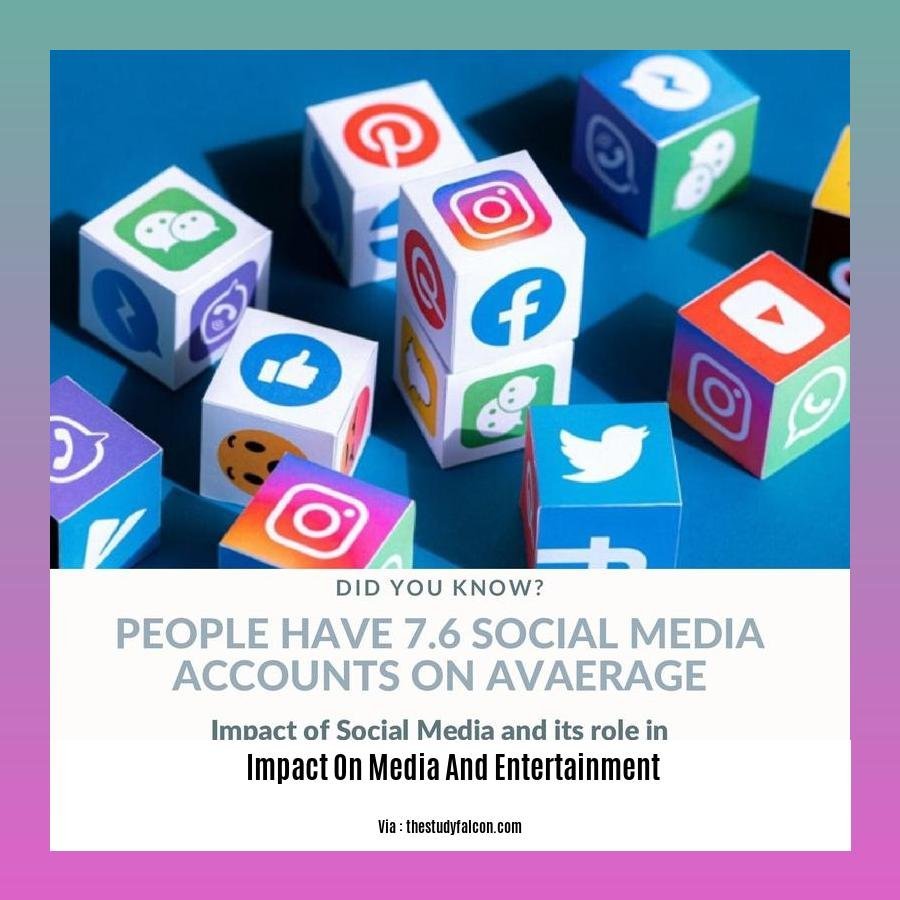Immerse yourself in [Technology’s Unstoppable Impact on Media and Entertainment]. Discover how technological advancements are transforming the way we consume, create, and distribute content in the ever-evolving entertainment realm. This exploration delves into the intricate relationship between technology and entertainment, unraveling the challenges and opportunities that shape the industry’s future.
Key Takeaways: Technology’s Unstoppable Impact on Media and Entertainment
- Digital Sales and Streaming Dominate: Digital sales and streaming services continue to lead the industry, with consumption patterns set during the pandemic becoming the norm.
- Innovative Business Models Emerge: Streaming video, social media, and gaming have fostered new business models, transforming the media and entertainment landscape.
Impact on media and entertainment

The media and entertainment industries have experienced a profound transformation in recent years, largely due to the rapid advancement of technology. These industries continue to evolve at a breakneck pace, driven by factors such as increased streaming video, social media, and gaming.
Digital Disruption in Media and Entertainment
The digital revolution has had a profound Impact on media and entertainment. The rise of streaming services has disrupted traditional television and movie distribution models, making it easier for consumers to access content on-demand. This has led to a decline in viewership for traditional television and a corresponding increase in popularity for streaming services.
New Business Models
Technology has also led to the development of new business models in the Impact on media and entertainment. For example, subscription-based services like Netflix and Spotify have become increasingly popular. These services offer consumers access to a wider variety of content than traditional media outlets, at a lower cost.
Blurring of Lines Between Media and Technology
Technology has also blurred the lines between media and technology. For example, social media platforms like Facebook and Twitter have become major sources of news and entertainment. This has led to a convergence of the media and technology industries, with companies like Apple and Google becoming major players in both sectors.
The Future of Media and Entertainment
The future of Impact on media and entertainment is uncertain, but it is clear that technology will continue to play a major role. The rise of artificial intelligence (AI) and virtual reality (VR) is likely to have a significant impact on the way that we consume media and entertainment.
Positive Impacts
- Increased access to content: Streaming services and social media have made it easier for consumers to access a wider variety of content than ever before.
- New ways to create and distribute content: Technology has provided new tools for creators to produce and distribute their work, giving them more control over their creative process.
- More personalized experiences: AI and VR can be used to create more personalized experiences for consumers, tailoring content to their individual interests and preferences.
Negative Impacts
- Job losses: The rise of technology has led to job losses in the Impact on media and entertainment as traditional jobs have been replaced by automation and digitization.
- Concentration of power: The rise of a few dominant tech companies has led to concerns about concentration of power in the media and entertainment industries.
- Fake news and misinformation: Social media and other online platforms have become breeding grounds for fake news and misinformation, which can have a negative impact on society.
Explore the captivating
from its humble beginnings to its dominant role in digital culture. Delve into the
of this internet giant. Discover how YouTube has revolutionized the way we consume and share content,
YouTube’s role in digital culture
is a testament to its transformative impact on our lives.
The emergence of virtual reality and augmented reality as immersive storytelling tools

Key Takeaways:
- AR and VR empower immersive storytelling experiences that engage audiences.
- AR enhances real-world interactions with digital overlays for compelling narratives.
- AR’s potential to revolutionize storytelling is vast, despite its nascent stage.
Augmented reality’s transformative role in storytelling
Imagine a news report where you can interact with the story by scanning an image or a museum exhibit that comes to life with interactive overlays. Augmented reality (AR) is revolutionizing storytelling by blending the physical and digital worlds, creating immersive experiences that captivate audiences.
From passive viewers to active participants
AR transforms passive media consumption into an active, engaging experience. By superimposing digital content onto the real world, AR allows us to interact with stories, explore environments, and shape the narrative itself. It empowers journalists to present complex information in visually compelling ways and enables storytellers to create interactive adventures that blur the lines between reality and imagination.
The future of storytelling is immersive
While virtual reality (VR) fully immerses users in virtual environments, AR seamlessly integrates digital elements into our world. Together, these technologies hold immense potential to redefine storytelling. As AR matures, we can expect even more innovative and engaging ways to experience stories, transforming the way we connect with information and entertainment.
Citations:
- The Emergence of Augmented Reality (AR) as a Storytelling Medium
- Immersive Storytelling in Augmented Reality: Witnessing the Reconstruction of Space and Time
The impact of artificial intelligence on content personalization and distribution
The rapid advancement of Artificial Intelligence (AI) is transforming various sectors, including media and entertainment. AI is revolutionizing how content is personalized and distributed, empowering creators and offering enhanced experiences for consumers.
AI’s Role in Content Personalization
By leveraging machine learning algorithms, AI analyzes vast amounts of data on user behavior, preferences, and demographics. This enables the creation of highly tailored content recommendations that cater to individual interests. Streaming services like Netflix and Spotify use AI to curate personalized playlists and suggest movies or music tailored to users’ tastes.
AI’s Impact on Content Distribution
AI optimizes content delivery by analyzing network traffic patterns and predicting user demand. This helps ensure smooth streaming, reduces buffering, and enhances the overall viewing experience. AI-powered algorithms also facilitate dynamic pricing, adjusting content costs based on factors like popularity and user engagement.
Key Takeaways:
- AI personalizes content by analyzing user data, resulting in tailored recommendations.
- AI optimizes content distribution, ensuring seamless streaming and dynamic pricing.
- AI enhances storytelling, creating immersive experiences and automating tasks for creators.
Relevant URL Sources:
- The Role of AI in the Entertainment Industry
- Artificial intelligence and mass personalization of communication and media
The convergence of technology and entertainment
The lines between **technology and entertainment** are blurring, creating new opportunities and challenges for businesses and consumers alike. Traditional media companies are partnering with tech giants to create new content and services, while tech startups are developing innovative ways to deliver entertainment experiences. This **convergence** is having a major impact on how we consume media and entertainment, and it is likely to continue to shape the industry for years to come.
**One of the most significant impacts of the convergence of technology and entertainment is the rise of streaming media.** Streaming services like Netflix, Hulu, and Disney+ have made it easier than ever for consumers to access a wide variety of movies, TV shows, and other content on demand. This has led to a decline in traditional television viewership and a rise in cord-cutting.
**The convergence of technology and entertainment** has also led to the development of new business models. Subscription-based services like Netflix and Spotify offer consumers access to a wider variety of content at a lower cost than traditional cable or satellite TV. This has made it more difficult for traditional media companies to compete, and has forced them to adapt their business models.
**The convergence of technology and entertainment** is also having a major impact on the way we interact with media and entertainment.** Social media platforms like Facebook, Twitter, and Instagram have become major sources of news and entertainment. This has made it easier for consumers to stay connected with the latest news, and has also given them a platform to share their thoughts and opinions.
**The convergence of technology and entertainment** is a major trend that is having a significant impact on the way we consume media and entertainment. It is likely to continue to shape the industry for years to come.
Key Takeaways:
- The convergence of technology and entertainment is creating new opportunities and challenges for businesses and consumers alike.
- Streaming media is one of the most significant impacts of the convergence of technology and entertainment.
- The convergence of technology and entertainment has also led to the development of new business models.
- Social media platforms have become major sources of news and entertainment.
- The convergence of technology and entertainment is a major trend that is likely to continue to shape the industry for years to come.
Relevant URL Sources:
- The Convergence of Technology and Entertainment
- The convergence of entertainment and technology















